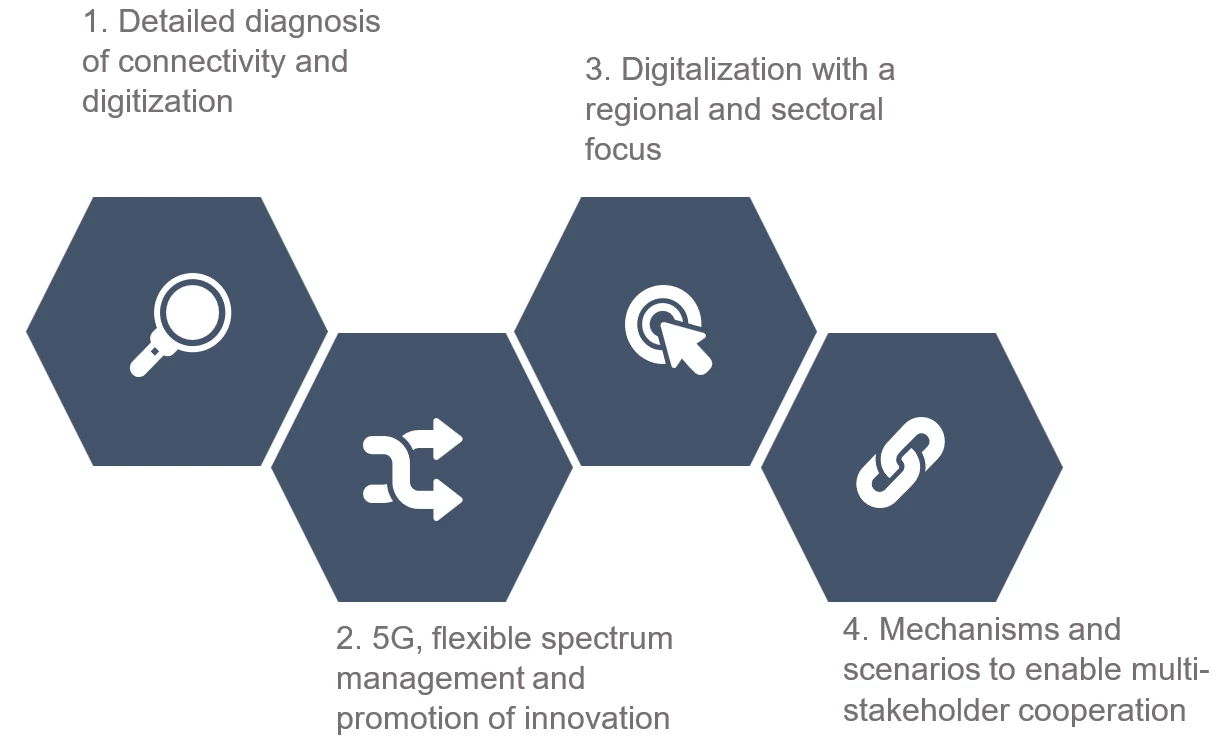 Woman using its smartphone in Bogotá's Transmilenio
Woman using its smartphone in Bogotá's Transmilenio
With less than 13 percent of its rural households connected to fixed internet, Colombia faces significant challenges to massify internet access . The starting point is a picture repeated in several countries in the region: limited internet coverage in rural areas, with only 28.8 percent of the rural population connected, and low penetration in urban segments with lower purchasing power, with less than 18 percent fixed internet penetration.
These conditions create a barrier to Internet adoption that is challenging to overcome: the base of the Colombian population pyramid, and citizens in rural areas lack sufficient income to afford Internet service access .
To prevent this issue from becoming a structural barrier, it is necessary to think of innovative initiatives that expand the frontiers of digitization. This innovation must come from all stakeholders: public and private, business, civil society, development agencies, and academia.
The Ministry of Information and Communication Technologies (ICT) presented its connectivity strategy, Conecta TIC 360, for the upcoming years as part of Colombia's National Development Plan. In this strategy, the Ministry aims to connect 85 percent of the country based on digital connectivity, device access, appropriation, and productivity. The government has stated that it is necessary to ensure that access to ICTs is not a factor of inequality.
The exact route to the established objective has yet to be defined, but what is clear is that there is a long way ahead. Achieving effectiveness in the established strategy will be a major challenge and the thermometer of success.
To achieve the established goal, it is essential to specifically identify the stones on the road to universal and meaningful connectivity, how they are generated, where they are located, and what are the conditioning variables to be considered (technological, environmental, financial, regulatory) to make the road towards universal connectivity as smooth as possible.
In addition, it is necessary to reflect on innovative and cooperative alternative solutions. Fortunately, especially due to the great contribution of new technologies, many tools are available.
To achieve this ambitious objective, it is necessary to establish a realistic and effective work plan focused on four pillars:
Work plan for effective Digital Development in Colombia
- Elaborating a detailed diagnostic of connectivity and digitization, which assesses connectivity at the level of each population center, the country's digital infrastructure, the digitization status of productive sectors -mapping of value chains- and the impact of the already implemented processes, and the state of digitization of the public sector.
- Spectrum policies: 5G and flexible management. This pillar includes the analysis of the shared use of the mobile spectrum, promoting greater flexibility in the assignment, advancing with the assignment of the 5G spectrum under efficient conditions that stimulate investments in this technology, and contemplating the use of the mobile/IMT spectrum by new technological platforms (HAPS, LEO).
- Digitalization with a regional and sectoral approach. This is essential to develop solutions tailored to the needs of each region, promote digitization, and eliminate barriers considering the specific conditions of each productive sector.
- Mechanisms and scenarios to enable multi-stakeholder cooperation. This pillar recognizes the importance of coordination between national and local governments, operators and manufacturers, large technology companies and developers, academia, civil society, and all other industries highly impacted by digitization (financial, oil & gas, transportation and logistics, agriculture, tourism). The Colombian Ministry of Information and Communication Technologies (MINTIC) has already worked on this pillar through regional dialogue workshops.
The World Bank is currently contributing to identifying the path towards the connectivity objective established by the Ministry through a study of options for the design of a regional pilot project to close the digital divide in the Department of Amazonas . With this study, we put into practice the four pillars of work, as it is an exercise that identifies the state of connectivity from a regional approach, analyzes the legislative and regulatory environment, and proposes solutions that involve all relevant actors.
It is true that the path to achieve the ultimate goal of universal and meaningful connectivity is long and that the barriers to overcome are substantial . However, a solid and well-planned work plan will make the path smoother and help achieve the established objective.
Stay updated with our weekly article,
Related articles




Join the Conversation